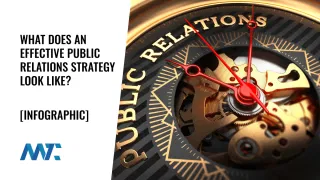The Problem With “No Comment”

For decades, no comment was a standard tactic in crisis communications. When news broke, spokespeople often believed that saying nothing was better than saying the wrong thing. In a world with a limited number of media outlets and slower news cycles, silence could be a buffer. At worst, it might leave a gap for speculation, but the circle of influence was small enough that a company could often weather the storm.
That world is gone.
Today, a no comment doesn’t create silence; it creates a vacuum, and vacuums are quickly filled. Social media users, competitors, influencers, bloggers, and 24-hour news outlets thrive on speculation. A single unanswered question can snowball into viral conjecture, fueling misinformation that becomes harder to correct. Worse still, a refusal to speak may be interpreted as guilt, indifference, or incompetence. In this environment, no comment is not just ineffective; it’s a liability.
Why “No Comment” No Longer Works
The fundamental problem is that no comment fails to acknowledge the new reality of information flow. Stories don’t just appear in tomorrow’s paper—they spread instantly, globally, and without context. Every moment of silence allows others to shape the narrative for you. That narrative may be inaccurate, unflattering, or even damaging to the long-term reputation of a brand or individual.
Public trust is fragile. Audiences expect transparency, responsiveness, and accountability. Saying “no comment” clashes with these expectations and undermines credibility at precisely the moment it matters most.
Strategic Alternatives to “No Comment”
Rather than retreating, public relations professionals should adopt proactive strategies that acknowledge the situation while maintaining control of the message. Here are some practical approaches:
- Acknowledge without Speculating: Instead of deflecting, offer recognition of the issue. Phrases such as We’re aware of the situation and are gathering the facts demonstrate attentiveness without committing to details prematurely.
- Provide a Holding Statement: A holding statement communicates that your organization is engaged while buying time to develop a fuller response. For example: We understand concerns are being raised and will share more information as soon as we are able.
- Redirect to Core Values: Reiterate your company’s guiding principles in moments of uncertainty. Statements like, Our priority is always the safety and well-being of our customers, anchor your message in values that resonate with audiences.
- Control the First Narrative: Even with limited details, being the first to comment positions your organization as the primary source of truth. A short, factual statement can set boundaries on speculation.
- Leverage Owned Channels: Don’t rely solely on third-party media. Use your website, press room, and social media to publish official updates. This ensures your message is accessible and less likely to be misinterpreted.
- Prepare Spokespeople for Transparency: Train executives and spokespeople to move away from reflexive evasiveness. Instead, equip them with approved language that balances honesty with caution.
- Update Frequently: In a fast-moving environment, one statement is rarely enough. Regular updates show ongoing engagement and prevent others from hijacking the timeline of communication.
Taking Back Control of the Narrative
The goal is not to reveal everything before you’re ready—it’s to demonstrate responsibility and responsiveness. By offering controlled, strategic communication, organizations can maintain credibility and protect their reputations, even when the facts are still emerging.
Public relations professionals should treat no comment as an outdated relic of the past. Today, silence doesn’t shield an organization; it exposes it. The better strategy is to stay engaged, manage expectations, and continually demonstrate that you are committed to transparency and accountability.







